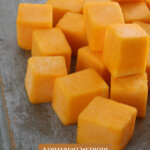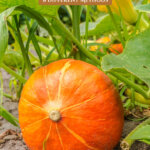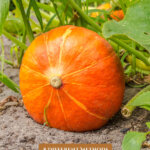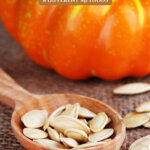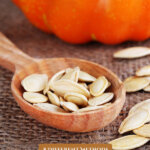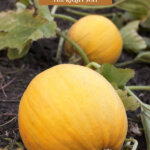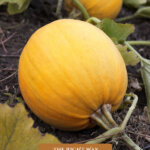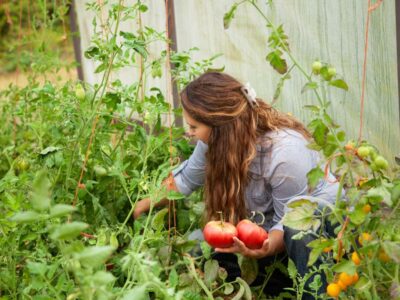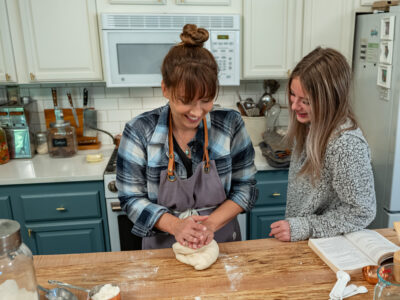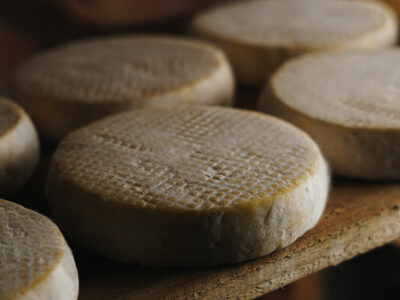Growing and preserving pumpkins is a fantastic way to not only improve the flavor of your pumpkin products but to save money and have the ability to enjoy the flavors of fall all year round. Here are eight ways to preserve pumpkins at home.
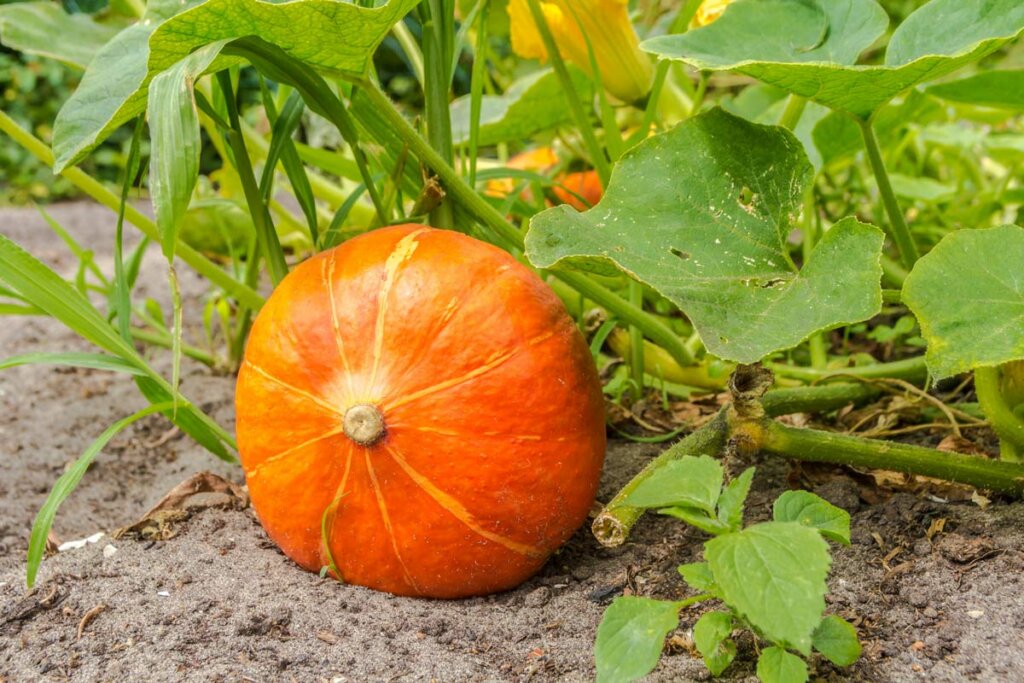
We all know when fall is approaching. We start seeing the pumpkin spice lattes, the fall decor in stores, and, of course, pumpkins!
We pioneer folk know the importance of putting up food when it's in season to use all year long. Keep reading for the 8 ways to preserve pumpkin, including safety tips about canning pumpkin products at home.
Pumpkin, glorious pumpkin. I use pumpkin all year long thanks to my pumpkin preservation, (you can have pumpkin sugar cookies, pumpkin applesauce muffins, or a pumpkin roll any time of year) but pumpkins do happen to be one of my favorite things about fall.
Where to Get Your pumpkins?
If you didn't grow your own pumpkins this year, don't worry! You have options! Try and find a local pumpkin patch, preferably organic, and grab a half-dozen or so to bring home and preserve (and maybe a couple to carve!).
There have been years where we didn't grow our own pumpkins, mostly due to space issues as they do tend to take up a large portion of the garden. When this is the case we usually get some sugar pie pumpkins (which are smaller and sweeter, preferable to baking and cooking with) from my folks.
8 Ways to Preserve Pumpkins at Home
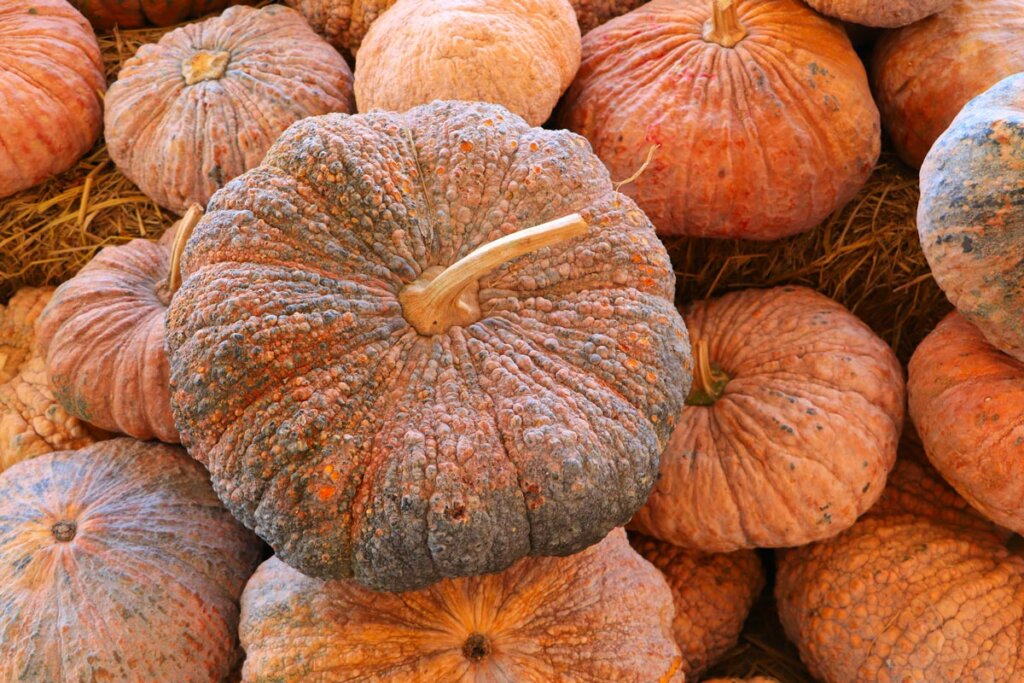
Storing Pumpkins in the Root Cellar or Cold Storage
Storing pumpkins in cold storage or a root cellar is a great way to enjoy fresh pumpkins into the winter months.
Before storing, there are a few things to make sure happen for best results:
- Make sure the pumpkin is mature (the skin should be hard on the outside, so hard your fingernail when pressed into the skin won't leave a dent).
- Allow the pumpkin to mature on the vine, if possible.
- Leave the stem on (this goes for any squash you harvest to help it last longer).
- Be sure none of the skin of the pumpkin is punctured or blemished for this method.
- To use for decoration or storing to use longer, wash the outside down and make sure it's thoroughly dry and has good air circulation. You can wipe the outside down with vinegar to help get rid of any bacteria that would make it break down faster.
- Pumpkins like between 50-75% humidity and 50 to 55 degrees F. Click here for more info on storing pumpkins and winter squash.
NOTE: Pumpkins won't last more than about two to three months in cold storage, so have a plan to use them up within that time, if cured properly and in optimal storage conditions I have had some last four months.
How to Freeze Pumpkin
Before freezing pumpkin (and before dehydrating, as mentioned below), you'll need to cook your pumpkin. There are two ways to cook pumpkin in order to use the following preserving methods.
Cooking Pumpkin
There are three different methods for cooking pumpkin prior to preserving:
- Cut and roast: The cooking method I've always used in the past is to cut the pumpkin in half, scoop out the seeds (save those for later!), and put it face down in a roasting pan with about 1/2 to 1 inch of water, then bake at 350 degrees F until soft.
- Roast whole: Alternatively, because sometimes pumpkins and other winter squashes are so difficult to cut, you can put the whole pumpkin in the oven (provided it's not too big to fit) and roast it at 350 degrees F until soft. Check the pumpkin by inserting a knife, similar to a baked potato, when the knife is inserted with ease, the pumpkin is done. Allow the pumpkin to cool before opening it out.
- Instant Pot: Cooking pumpkin in the Instant Pot couldn't be eaiser and is the method I now use. You can watch how I cook my pumpkin whole in my Instant Pot in this YouTube video (TIP: you can do the same thing in the oven, it will just take longer).
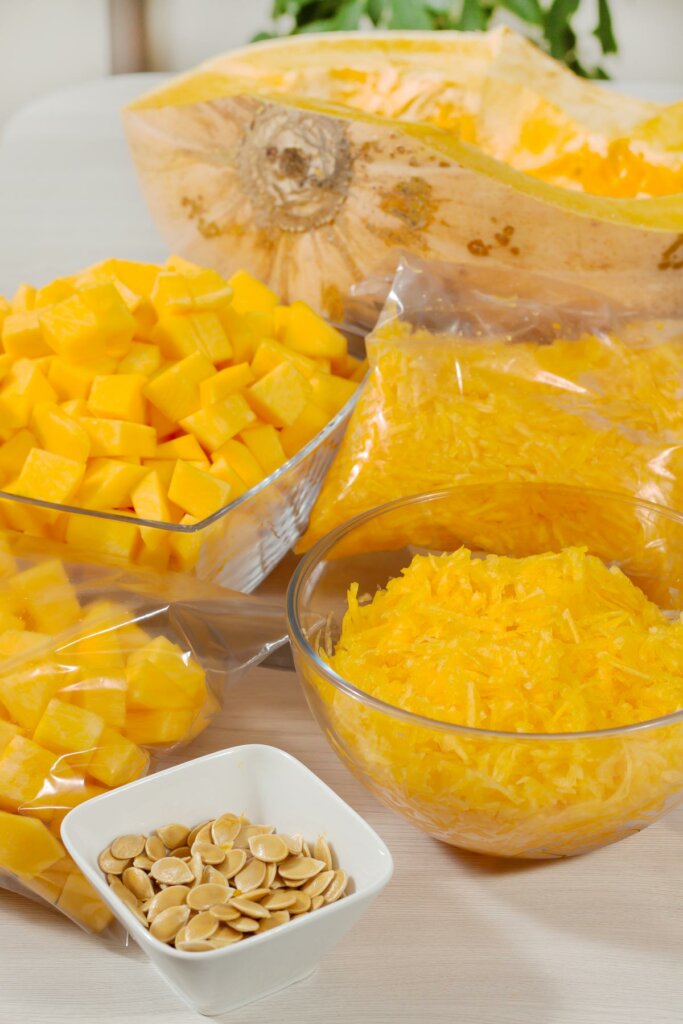
You can freeze pumpkin in pureed form or cubed. I usually put cubes of cooked pumpkin in a wide mouth pint-sized Mason jar because most of my recipes call for 2 cups of pumpkin.
It thaws really quickly and I puree it right before using it in my recipes. You could put it in plastic bags as well, but I prefer to use my Mason jars.
Dehydrated Pumpkin
You can dehydrate pumpkin in either puree or cubed form. Jane from Mom with a Prep prefers the puree and then grinds it into a powder after it's been dehydrated. You can check out her dehydrated pumpkin powder tutorial here.
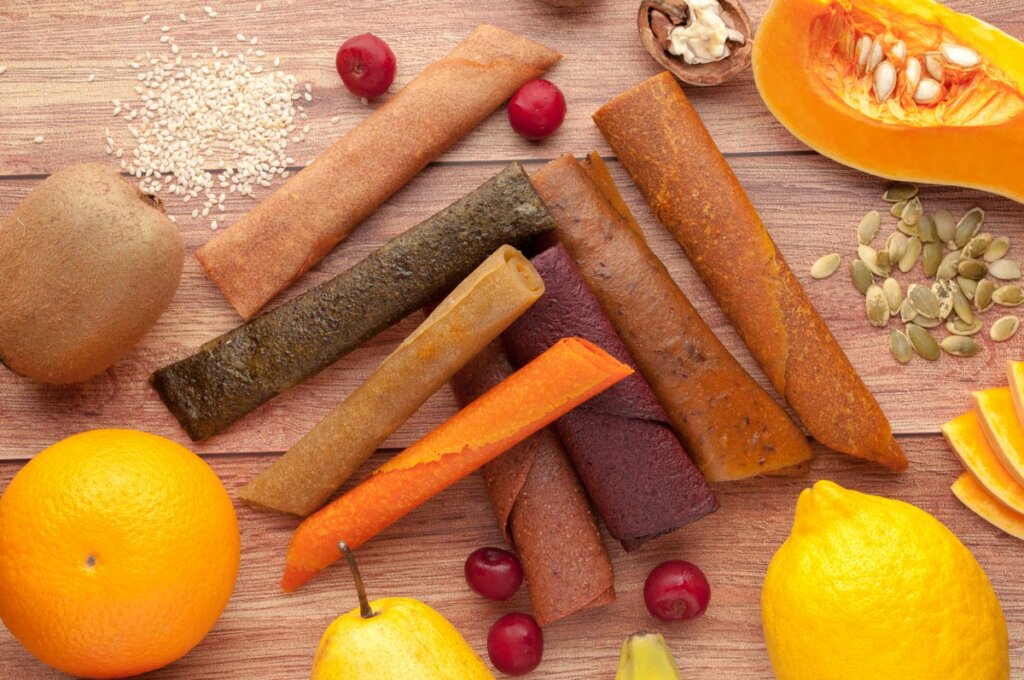
Pumpkin Fruit Leather
How did I not think of this one on my own? Maybe it's because the thought of pumpkin fruit leather doesn't sound delicious, but when you consider mixing in pumpkin pie spices and some maple syrup? YUM!
Take it even further and combine pumpkin puree, applesauce, or other fruit preserves and make them into any yummy fruit leather combo.
Here's a basic recipe from Chatelaine.
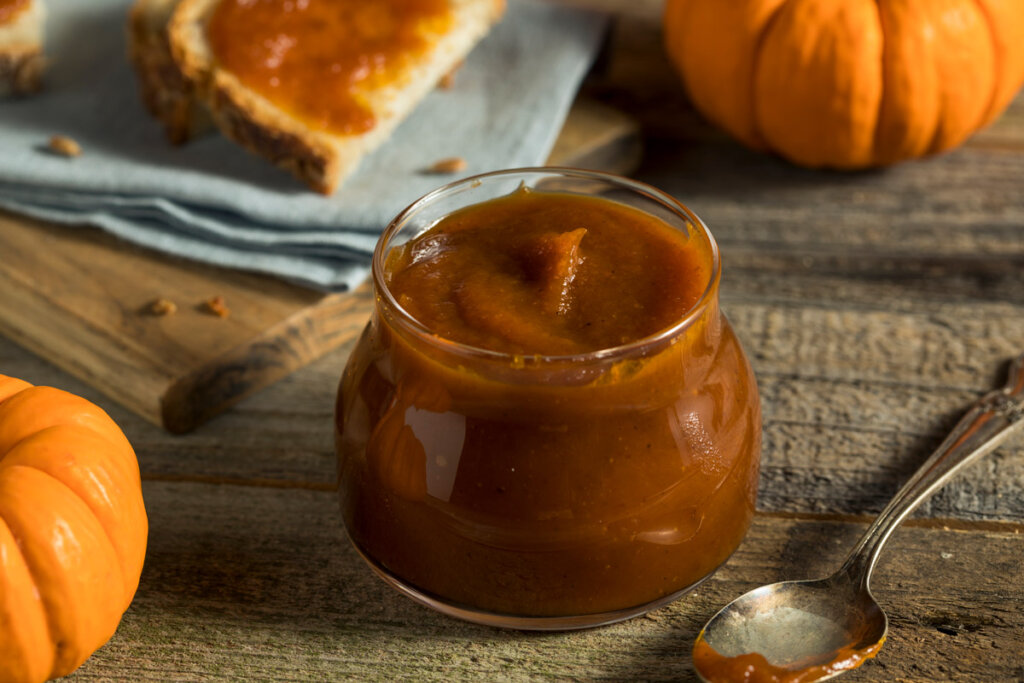
Pumpkin Butter
Right off the bat, I need to clarify that this is NOT a canning option! We've got to talk food safety here for a minute guys. Pumpkin butter is made from pumpkin, a non-acidic food, and is only safe when pressure canned, but because pumpkin butter is thick it's not safe to be canned in a pressure canner.
Pumpkin butter is safe to freeze or store in the fridge, not canned. Don't do it. I'm seeing lots of this on Pinterest and it's not a safe practice to can pumpkin butter.
However, some yummy pumpkin butter is definitely a way to preserve pumpkin and I might be guilty of grabbing a spoonful of it! Am I the only one? Okay, I know, I know, it's supposed to go on things. But on a spoon counts, right?
This is a great from-scratch recipe for Pumpkin Butter.
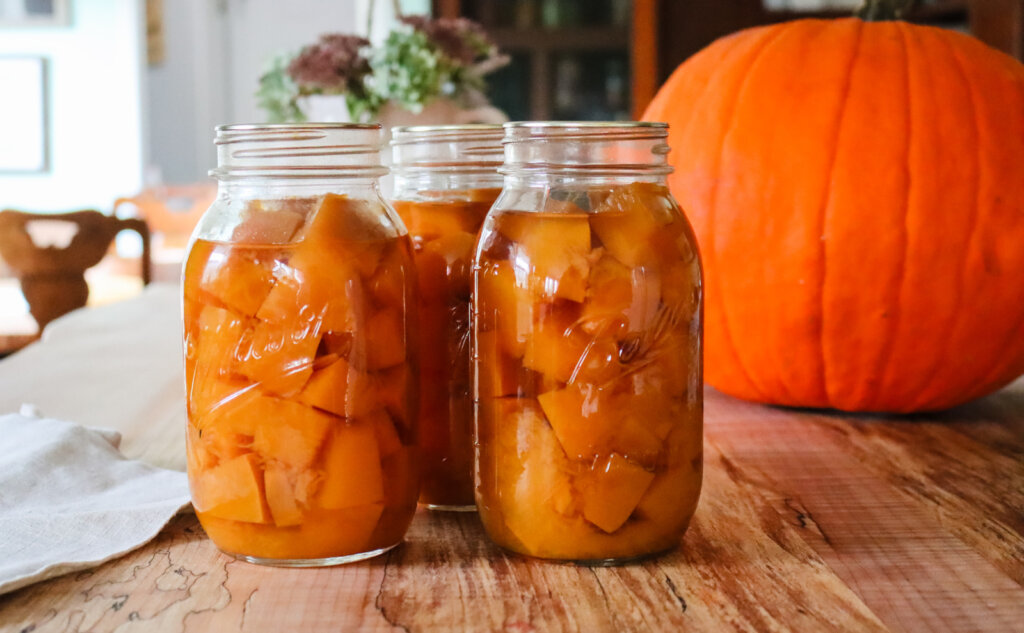
Cubed Pumpkin (Canned)
Canning cubed pumpkin is the only safe way to can pumpkin. You may can cubes of pumpkin at home, not pumpkin puree, butter, or pie filling. Store-bought canned pumpkin items are done with industrial canners that reach much higher temps than home models.
How to Can Pumpkin (or Wintersquash)
Most common are butternut and sugar or pie pumpkins. (National Center of Home Food Preservation recommends only using sugar or pie pumpkin for best results, not using the larger carving pumpkins).
It’s NOT safe to can spaghetti squash due to its stringiness.
Do you have to hot pack winter squash?
Yes, there are no tested times for using a raw pack method, you must hot pack it.
How much do you need?
Average is 16 pounds for 7 quarts (that equaled three sugar pumpkins for me) or about 2 and ¼ pounds per quart jar (1/2 that for pints)
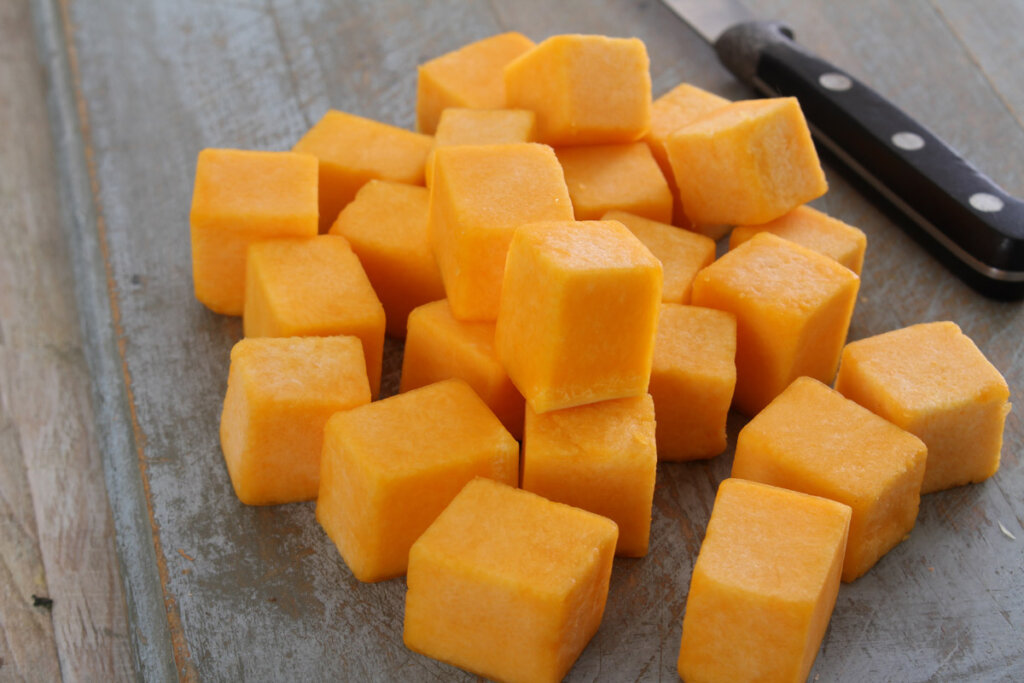
How to Can Winter Squash
- Wash your squash off and remove the stems. Cut in half and remove the seeds and pulps.
- Cut your pumpkin into quarters and then into 1 inch long strips.
- Peel the rind. Cut into 1 inch cubes.
- Prepare your pressure canner (place rack and water in it and turn to medium heat) and get jars ready (washed and rinsed with hot soapy water so glass isn’t cold or room temp).
- Prepare a large pot with water and bring to a boil. Blanch prepared squash cubes in boiling water for 2 minutes.
- Remove from heat and with a slotted spoon, fill jars with cubes to generous 1 inch headspace (do not mash or puree while packing). Take the liquid from the pot and fill to a 1 inch head space, remove air bubbles and check headspace again, add more water if necessary.
- Wipe rim clean, place on lid, screw band down to finger tip tight and place in canner.
- When all jars are in canner, check vent pipe is clear, place lid on canner, lock into place, and bring up to temperature. When a steady stream of steam comes out the vent pipe, set timer for 10 minutes.
- After 10 minutes, put your weight on and when canner is at appropriate pounds of pressure (10 pounds for altitudes 1,000 feet above sea level and 15 pounds for altitudes 1,001 feet above sea level), set your timer for the appropriate jar size in the chart below.
- When time is up, turn off heat and let pressure release naturally. When all pressure is released, carefully remove pressure canner lid, and place jars on a folded towel to cool and seal. Allow to cool for 12 hours before checking seals, removing bands, wiping down jars, and storing on the shelf!
Weighted Gauge Canners
| Jar Size | Time | Pressure for 0 to 1,000 feet above sea level | Pressure for 1,001 + above sea level |
| Pint | 55 minutes | 10 lbs | 15 lbs |
| Quart | 90 minutes | 10 lbs | 15 lbs |
Dial Gauge Canners
| Jar Size | Time | PSI 0 – 2,000 ft | PSI 2,001 – 4,000 ft | PSI 4,001 – 6,000 ft | PSI 6,001 – 8,000 ft |
| Pint | 55 minutes | 11 lbs | 12 lbs | 13 lbs | 14 lbs |
| Quart | 90 minutes | 11 lbs | 12 lbs | 13 lbs | 14 lbs |
*processing times from National Center of Home Food Preservation and Ball Book of Complete Canning
Having canned food is great for when I've not planned ahead and got the hankering to bake, aka, no time to allow frozen food to thaw.
What kind or brand of pressure canner should I get?
Answer: This depends on your budget and stove type. I started out with a Murro pressure canner and used it for over 13 years, but as my family grew (and I increased the amount of canned items at home) I've had an All American pressure canner for 5 years now and love it. This article breaks down price, stove top, and How to Choose the Best Pressure Canner
Want to learn how to can safely? Join thousands of others who have gone through my FREE Home Canning Videos Training Series here.
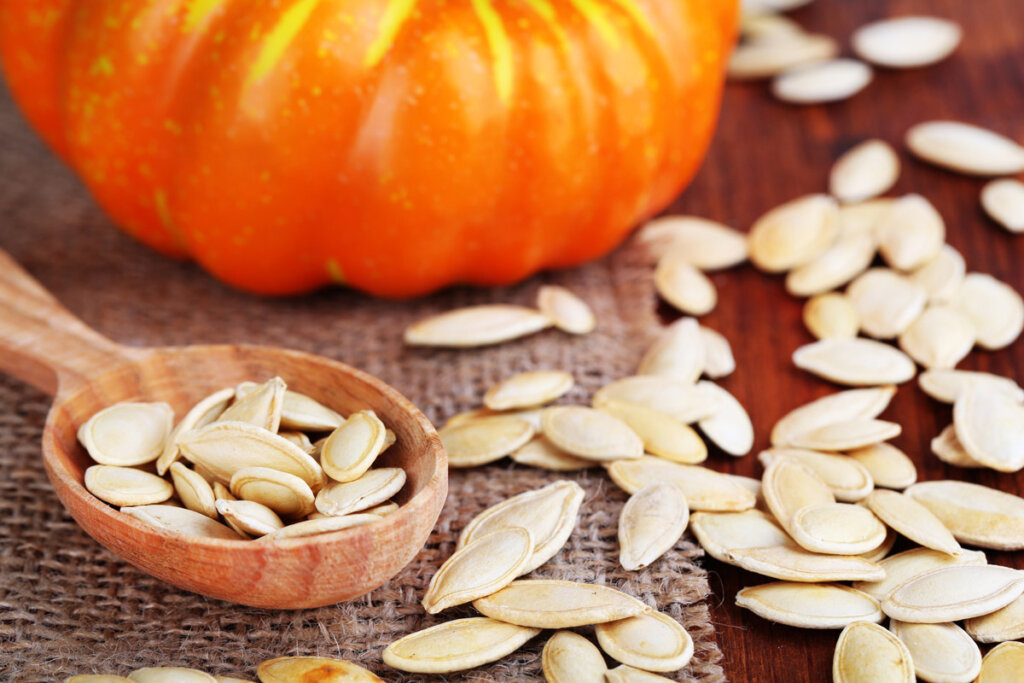
Roasted Pumpkin Seeds
I hate to throw away the scraps of food. I use apple scraps for compost, to feed my chickens, or to make homemade apple cider vinegar. I know, it's not a pumpkin thing, but if you've got apples check out these 11 Ways to Preserve Apples at Home.
So pumpkin seeds are really a fun snack. The Jack-O-Lantern pumpkins are great for this as they have a ton of seeds in them and you have to clean all that out before carving anyway. My family can empty a baking sheet of pumpkin seeds in one sitting.
We like them sweet and savory. Here are 10 Different Roasted Pumpkin Seed Recipes. (You guys, the cinnamon maple is amazing!)
Pumpkin Syrup
Yes, you can combine pumpkin puree and sugar to transform it into a delicious pumpkin syrup. Genius, right? Another Pinterest find. If you love Pinterest as much as I do, check out my Pinterest boards and see all the fun stuff I've got going on!
Here's the Pumpkin Syrup Recipe.
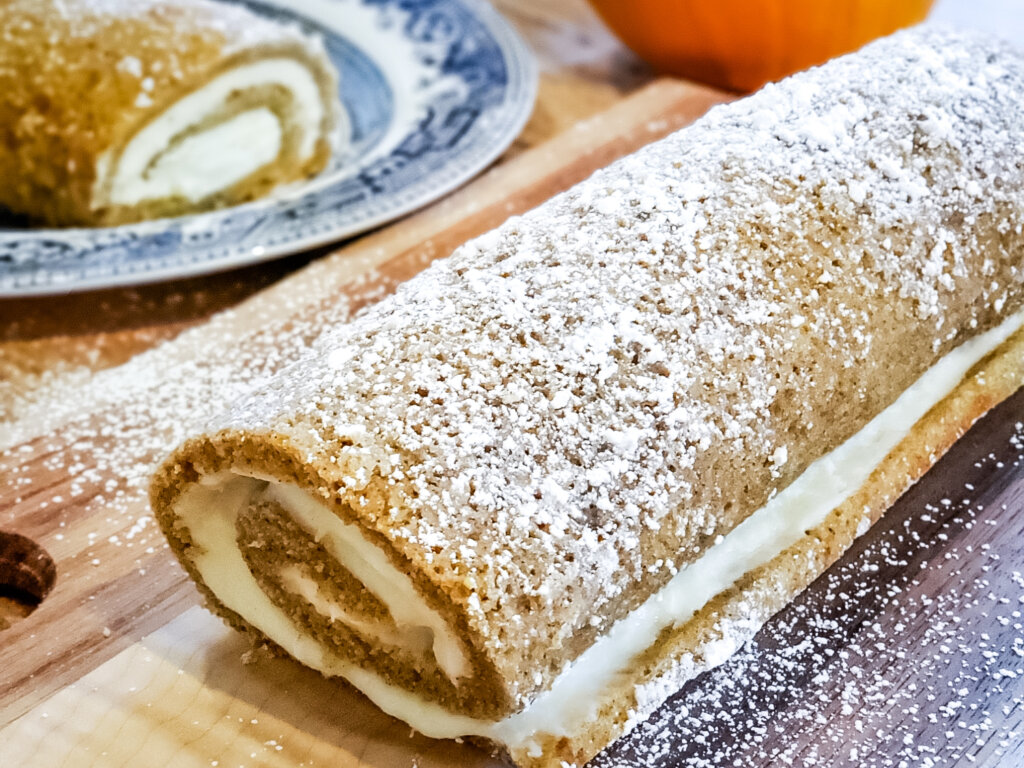
Now that you've got all these ways to use pumpkin, one you definitely have to make is my Grandma's famous From Scratch Pumpkin Roll, I even made you a video to walk you through each and every step!

More Posts You May Enjoy
- Pumpkin Applesauce Muffins
- Old-Fashioned Pumpkin Sugar Cookies
- How to Make a Pumpkin Roll From Scratch
- No Bake Pumpkin Cream Pie
- Pumpkin Applesauce Cake
- Your Gardening Questions Answered
- 13 Pantry Items to Always Have on Hand
- Vinegar-The Most Versatile Item In Your Home
- 11 Ways to Preserve Apples
- Made From Scratch Life (my book that includes so many yummy recipes, including the pumpkin roll recipe above!)
- Handmade (another book of mine to transform your home into a handmade household.)

